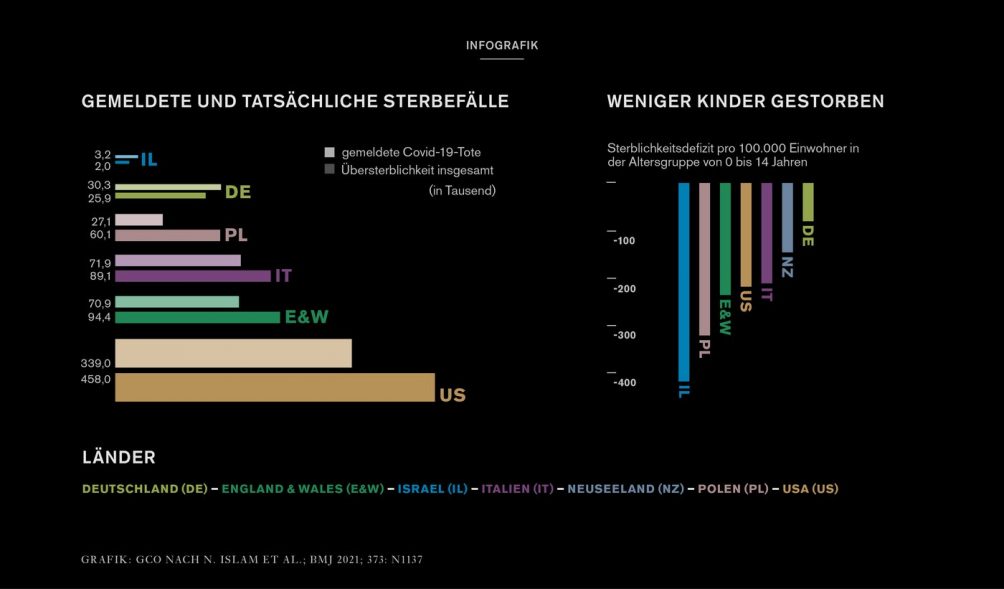
Covid-19 has claimed millions of lives. The true extent of the pandemic can be seen in the so-called excess mortality, i.e., the comparison between the reported death data in 2020 and the expected deaths resulting from the pattern of the previous years. A team from the Max Planck Institute for Demographic Research has made this comparison. The results show: The number of deaths depends not only on the development of infection figures and the protective measures taken but also on factors such as the performance of the healthcare system and the age structure of the population.

In many places, the pandemic has claimed more victims than reported, due to factors such as overburdened health systems. On the other hand, measures such as mask-wearing, contact and mobility restrictions have also prevented deaths from other infections and accidents. This effect is seen in Germany and Israel, where the number of reported covid-19 deaths was higher than excess mortality. Decreased death rates among children and adolescents are also likely due to this cause.

The graphs show for 2020 how many more or fewer deaths there were per 100,000 inhabitants per calendar week than the average for 2016 to 2019. New Zealand stands out, with only 25 people dying from covid-19. In contrast, the fairly low excess mortality in Israel, which was heavily affected by the pandemic, is probably related to its rather young population. Effects beyond Corona are also evident. For example, many people died in Germany in August due to a heat wave.


Also interesting: Getting through the corona crisis better with music








